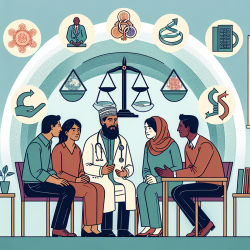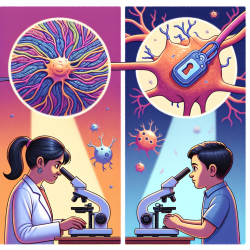Introduction
In the ever-evolving landscape of healthcare, the implementation of new emergency departments (EDs) presents unique challenges, particularly when it comes to collaboration among medical professionals. A recent study titled "Influences of Specialty Identity When Implementing a New Emergency Department in Denmark: A Qualitative Study" sheds light on the role of specialty identity in these processes. Understanding and addressing these dynamics is crucial for practitioners aiming to improve their skills and outcomes in healthcare settings.
Understanding Specialty Identity
Specialty identity refers to the unique professional identity that develops within a specific field, such as medicine. It is shaped by the norms, values, and knowledge that characterize the profession. According to Social Identity Theory (SIT), individuals derive part of their self-concept from group memberships, which can influence their perceptions and behaviors.
Key Findings from the Study
The study conducted in Denmark utilized qualitative methods, including observations and interviews, to explore how specialty identity influences collaboration among physicians. The analysis revealed three main themes:
- Ongoing Creation and Re-creation of Specialty Identity: Physicians continuously create and redefine their specialty identity through boundary drawing, which can both support and hinder collaboration.
- Social Categorization and Power Relations: Specialty identity involves social categorization, leading to power dynamics and an "us vs. them" mentality, which can create barriers to effective collaboration.
- The Patient as a Boundary Object: In some cases, the patient serves as a unifying factor, helping to bridge gaps between specialties and promote successful collaboration.
Implications for Practitioners
For practitioners, understanding the impact of specialty identity on collaboration is essential. Here are some strategies to improve teamwork and outcomes:
- Promote Interdisciplinary Training: Encourage training programs that focus on building interpersonal skills and understanding the roles of different specialties.
- Foster Open Communication: Create an environment where open dialogue is encouraged, and feedback is constructively given and received.
- Leverage the Patient as a Unifying Factor: Use the patient's needs and outcomes as a common goal to align different specialties and foster collaboration.
Encouraging Further Research
While this study provides valuable insights, further research is needed to explore the nuances of specialty identity and its impact on healthcare implementation. Practitioners are encouraged to engage in or support research initiatives that investigate these dynamics in various contexts.
Conclusion
Specialty identity plays a significant role in the implementation of new EDs, influencing collaboration among physicians. By understanding and addressing these dynamics, practitioners can enhance teamwork and improve patient outcomes. For those interested in delving deeper into this topic, the original research paper offers a comprehensive analysis.
To read the original research paper, please follow this link: Influences of specialty identity when implementing a new emergency department in Denmark: a qualitative study.










